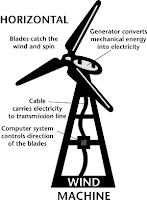Our ocean is at risk.
A new study by Stanford University researchers looked at a vast array of previous studies about the Pacific, and concludes that there's trouble in our Paradise.
(Image: The oceans report's cover. Credit: Center for Ocean Solutions.)
Interestingly, for anyone familiar with issues in the coastal ocean around Hawai'i, most of the conclusions won't come as a surprise: big issues include sewage and runoff from the land, habitat destruction, overfishing, invasive species, climate change.
In the Islands, think of clouds of sediment pouring into the sea after a heavy rain. Think of dredged reefs and ships aground. Think of why you can't count on catching dinner on a shoreline fishing trip. And think of the tangles of invasive limu choking Kane'ohe Bay. Think of eroding beaches and dying corals.
The study by the Center for Ocean Solutions is “Pacific Ocean Synthesis: Scientific Literature Review of Coastal and Ocean Threats, Impacts, and Solutions.” The Center for Ocean Solutions is managed by the Woods Center for the Environment, at Stanford University.
Primary report authors are Margaret Caldwell, Tegan Churcher Hoffmann, Steve Palumbi, Jessica Teisch, Chelsea Tu. It is available here: http://www.centerforoceansolutions.org/PacificSynthesis.pdf.
One of the issues with scientific research, of course, is that there are lots of researchers studying different pieces of the elephant, but seldom does anyone step back and view the whole elephant.
This report tries to do that.
It “summarizes and distills the scientific literature and highlights common trends in and around the Pacific Ocean regarding threats, impacts and solutions through the review of more than 3400 scientific articles and reports.”
The lead scientists got together and reviewed their work in Honolulu in August last year.
Among their findings: “a review of environmental threats across the Pacific Ocean shows remarkable similarity between the major problems experienced in poor and rich countries or territories alike, in densely settled areas and in rural zones, in populous countries and on small islands. Across these diverse areas, there are three pervasive and serious local threats: pollution from sewage and land runoff, habitat destruction, and overfishing and exploitation. We classify invasive species, which can be considered under both pollution and habitat destruction, as a fourth threat, in a category of its own.”
The final big one, of course, is climate change, which “imperils all Pacific ecosystems.”
An H1N1 “swine” flu analogy may be appropriate here. Ultimately, when people die of this generally mild flu, it's because its symptoms are piled on top of pre-existing medical conditions. Most otherwise healthy folks can handle a flu.
Same with the oceans.
“When marine life is subjected to multiple stressors, including pollution, habitat destruction, overfishing, and climate change, populations of ecologically and economically important species can collapse, from coral reefs to kelp forests to cold water deep seas. In this sense, global climate change is coming at the worst possible time, when many communities around the Pacific—both human and ecological—are threatened by other major problems,” the report's abstract says.
Its recommendations are to act globally on global issues, like climate change, and locally to create a sustainability ethic for local issues, like runoff and overfishing.
© Jan TenBruggencate 2009















